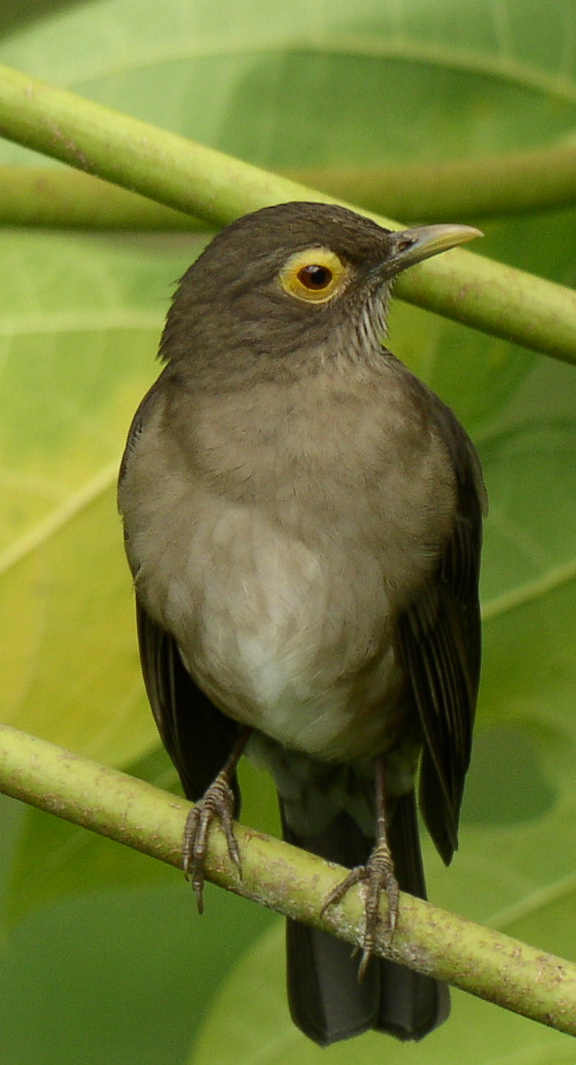- Bare-eyed Thrush
:"The name Bare-eyed Thrush can also refer to the
African Bare-eyed Thrush , "Turdus tephronotus"Taxobox
name = Bare-eyed Thrush
status = LC
status_system = iucn3.1

image_caption = Adult Bare-eyed Thrush, showing eyering for which it is named
regnum =Animal ia
phylum = Chordata
classis = Aves
ordo = Passeriformes
familia = Turdidae
genus = "Turdus "
species = "T. nudigenis"
binomial = "Turdus nudigenis"
binomial_authority = Lafresnaye, 1848The Bare-eyed Thrush or Yellow-eyed Thrush, "Turdus nudigenis", is a resident breeding
bird in theLesser Antilles and inSouth America fromColombia andVenezuela south and east to northernBrazil . InTrinidad and Tobago , this thrush is also known as the 'Big Eye Grieve'.The very similar bird breeding from western
Ecuador to northwesternPeru was formerly considered to be a subspecies, "T. n. maculirostris", of the Bare-eyed Thrush, but it has a narrower eyering, prefers denser forests, and is widely separated in range. it is now normally separated as theEcuadorian Thrush , "Turdus maculirostris".Description
The Bare-eyed Thrush is 23-24 cm long and weighs 60g. It is plain olive-brown above and paler brown below. The throat is brown-streaked off-white, and the lower belly is whitish. It has a prominent yellow eye ring which gives rise to its English and scientific names.
There are two poorly defined races, differing mainly in the darkness of the plumage. Sexes are similar, but young birds are flecked above and spotted below, and have a thinner eye ring.
Habitat and behaviour
The habitat of this large thrush is open woodland, forest clearings and cultivation. The nest is a lined bulky cup of twigs low in a tree. The two to three reddish-blotched deep-blue eggs are incubated by the female alone.
The Bare-eyed Thrush mainly feeds on or near the ground on
fruit , berries and someinsect s andearthworm s. It is a shy species, but onTrinidad andTobago it is much tamer, and will come to feeders and take food from tables. The song is a musical warble, slower and lower pitched thanCocoa Thrush , and it also produces a cat-like "queeoow" call and, when uncomfortable, emits a "Kereel".References
*
* "Thrushes" by Clement and Hathaway, ISBN 0-7136-3940-7
* "Birds of Venezuela" by Hilty, ISBN 0-7136-6418-5
*cite book
last = ffrench
first = Richard
title = A Guide to the Birds of Trinidad and Tobago
edition = 2nd edition
year = 1991
publisher = Comstock Publishing
isbn = 0-8014-9792-2
Wikimedia Foundation. 2010.
